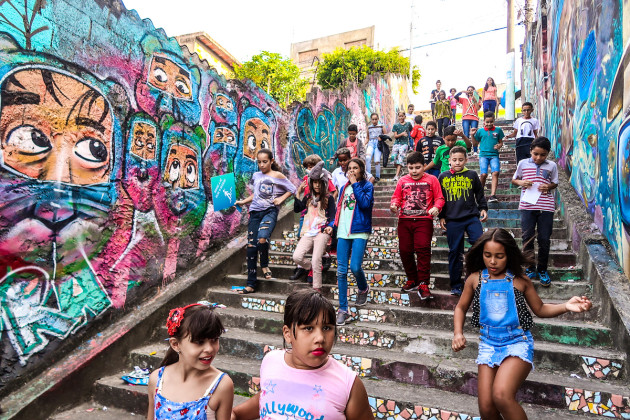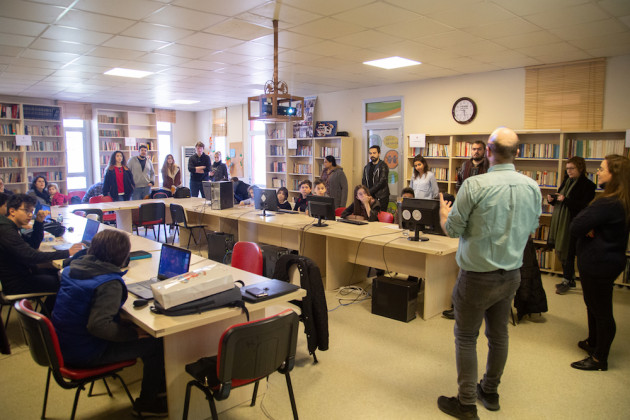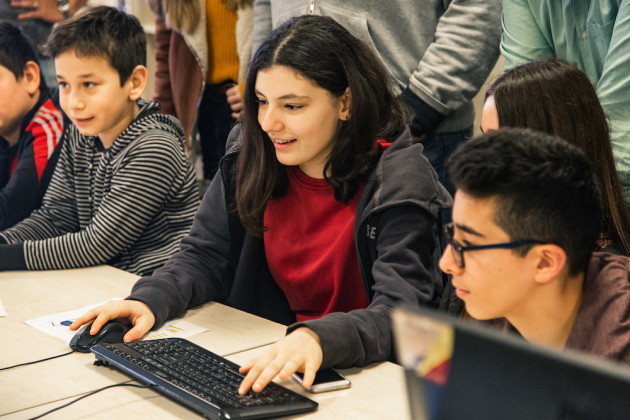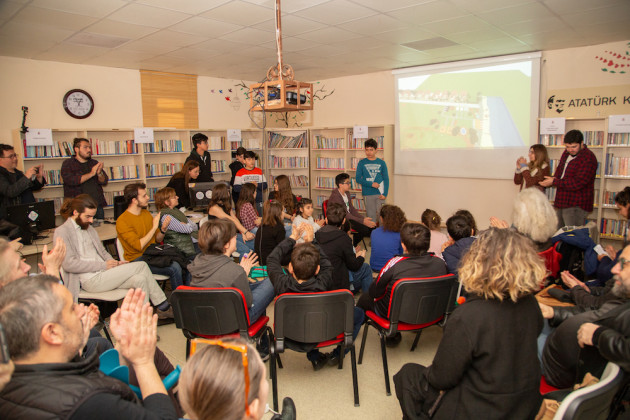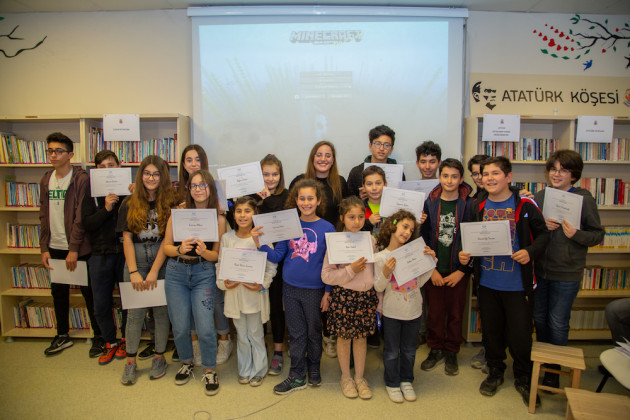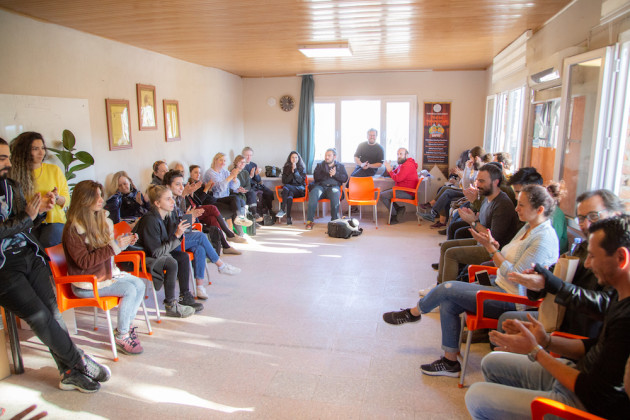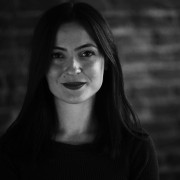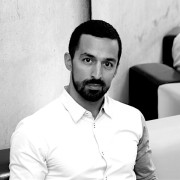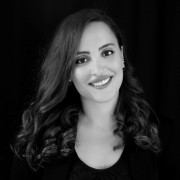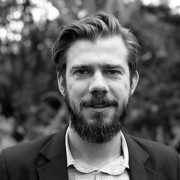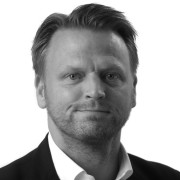Participatory Dialogues for Urban Design
Bilgen Coşkun and Dilek Öztürk talked with architects and urban planners Christelle Lahoud, Pontus Westerberg and Klas Groth from UN-Habitat Urban Planning and Design Branch about designing smart cities through participatory planning approaches.
What is the scope of your work at UN-Habitat?
UN-Habitat, established as an outcome from the Habitat I conference in Vancouver in 1976, is the United Nations Human Settlements Programme and the UN agency mandated to ensure that cities and towns are developed in a sustainable way. The world is rapidly urbanizing. Over half the world’s population live in cities and that is expected to rise to over two thirds by 2050 due to migration and population growth. Cities are engines of growth but also pose challenges related for example to ensure a just and equitable social, economic and environmental development. At UN-Habitat, we support cities and governments on these issues through individual projects or larger programmes, but also by making information and knowledge available by sharing best practices and experiences. The UN-Habitat Headquarters is located in Nairobi, Kenya and we have offices across the world and work in over 90 countries. In 1996, the second Habitat conference was held in Istanbul, Turkey, where the Habitat Agenda was agreed upon providing goals and direction for the new millennium.
Can you please tell us about yourself and professional career?
At UN-Habitat, we have diverse teams working on urban development where several of the colleagues have a background within urban planning, architecture, urban development policies, etc, but also specialized expertise within land management, legal matters, transport and mobility, climate change, urban governance among others. We also have experts that look more in-depth into new technologies, smart cities and innovative approaches to urban development.
Can you please share your approach concerning creative, smart and inclusive cities?
UN-Habitat is constantly looking for new and alternative approaches to promote sustainable urban development. For example, we recently carried out research into the role that of challenge-driven innovation processes can play in making cities in emerging economies more sustainable, and developed a smart city masterplan that is used by the Government of Rwanda to use digital technologies and innovation to improve the quality of life of Rwanda’s urban residents.
To do this, there are several technical tools and methodologies that can be of support, but for us, smart cities are also about making use of available resources in the best way possible – whether its technical, human, or natural. A smart city also recognizes that involving the stakeholders – whether it’s the residents, the business sector, academia or other actors within the urban arena – is important to contribute to development. Inclusivity is not only about being part of a development process for a specific project or initiative, but inclusiveness is also about identity, culture and belonging, about feeling at home. Inclusivity means that all groups of society have a place, and space, in a particular city or town, regardless of age, sex, religion or cultural background.
How do you integrate technological improvements into your projects?
We think that this can be related to at least two perspectives. On the one hand, UN-Habitat tries to both identify and apply various technical tools as part of a development process. Technical tools can be a great way to illustrate, demonstrate and guide the development process – but also a way to involve communities in a dialogue on their future. I will come back to this later.
Application of new technologies in the built environment is the other perspective, where the current wide access to information and data opens new windows of opportunities. This can be applied for example related to the provision of technical infrastructure, mobility and transport, energy consumption (and savings), etc – the list can be made long. However, use of such technology still relies on a good foundation, meaning that we still need to plan and design the built environment in a good and robust way, which in turn can accommodate many different solutions. Of course, sound urban planning also needs to be accompanied by a realistic and solid financing solution, in both a short- and long term perspective.
Block by Block is being implemented in Seferihisar.1 Can you please tell us about this project?
The Block by Block initiative was originally created as a collaboration between the founder of the gaming platform Minecraft – Mojang – and UN-Habitat. The Block by Block initiative basically provides the opportunity to apply a technical tool in the planning and design process – where the participants have the opportunity to engage “hands-on” on development issues, most often related to the planning of public space in cities and towns. UN-Habitat has applied this tool worldwide, often with a positive and concrete outcome and where several projects now have been implemented.
During the launch of the collaboration and exchange between Sweden and Turkey on “Equal Spaces: Creative, Smart, Inclusive” – the idea came up to make use of the Block by Block process, engaging the community in Seferihisar, and in particular the Children’s Municipality. This we thought was an interesting opportunity where the Block by Block methodology could contribute not only to the development and engagement of the community in Seferihisar, but also a way to broaden the discussion on creative, smart and inclusive cities.
The 2-day workshop in Seferihisar engaged around 25 children between the age of 12 and 15 to design their summer camp using the video-game Minecraft. After a brainstorming session, the kids proposed many ideas like benches, trees, open cinema, playgrounds and others. The children then presented their ideas to the wider stakeholders. The priority ideas will be selected to be part of the final technical design.
The Block By Block project in Seferihisar represents one of several examples on how UN-Habitat enters into collaborations with various partners to work in local contexts. In this case, the collaboration with the Swedish Institute aims to promote sustainable urban development, and the Block By Block initiative could in this context specifically demonstrate how digital tools and inclusive processes can promote creative, smart and inclusive cities.
Can you please tell us about your main projects in Turkey right now?
UN-Habitat as an organization operates globally, in many cases with an office or project organization represented in the country. Unfortunately, UN-Habitat does not currently have such a presence in Turkey. However, we work in collaboration with governments and donors, and currently, we support the UK Government on the Global Future Cities Programme aiming to promote sustainable urbanization in three Turkish cities; Ankara, Istanbul and Bursa. Part of this collaboration relates to your previous question on innovation and smart cities and aligns very well to the Turkish government’s current focus on promoting smart city development.
There are different actors in urban surroundings; municipalities, businesses and citizens. How do you bring the wishes and preferences of these different stakeholders together?
We think this comes back to your earlier question on inclusivity where we believe the local government or municipality can have an important role in bringing such various actors together on a continuous basis, where issues can be raised and discussed over time. Of course, other actors such as organizations and institutions can also play this role. The importance is that space and relevant forums are created to support the general public conversation on urban development. It may be so that such dialogue will help to identify the necessary priorities which in turn can be transferred to actual projects or initiatives.
What are the main challenges and opportunities of Turkey from an urban planning perspective?
Just like many other cities and towns globally, Turkey has during the last decades experienced rapid urbanization. Currently, Turkey is about 75% with an approximate annual urbanization rate of 2.2%. So finding appropriate and effective ways to properly plan for development is usually a challenge. On the other hand, with a growing population coupled with conscious investments also comes opportunities for economic development and growth. Usually, this goes hand in hand and looking globally, around 70% of a country’s gross domestic product comes from cities. So there are definitely opportunities connected to urban development.
From what we have observed there are several efforts in addressing these challenges, and Izmir (where the Block by Block workshop was held) seems to be advancing well in terms of planning and design, for example by looking at the provision of public space, the road network, connectivity, etc. By good planning, there are also opportunities to promote mixed-use developments, either in already existing urban fabric or in new developments, and mixed-use together with good connectivity and accessibility is key for a functional social and economic urban environment. We think that by including existing communities in dialogue and conversation about the city at large, or individual neighborhoods, will enrich the planning process and make the outcome more sustainable.
NOTES:
1 This interview is conducted in the scope of Block by Block workshops organised in Seferihisar between 16-17 March 2019. The workshop in Seferihisar is initiated by the Swedish Institute and curated by H. Cenk Dereli (Architect, Ph.D.) with the contribution of Herkes İçin Mimarlık Derneği (Architecture for All association), and Cut-Paper; design students’ club of Izmir University of Economics Faculty of Fine Arts and Design. The project is a collaboration between the Swedish Institute, UN-Habitat, Block by Block and Seferihisar Çocuk Belediyesi, and is part of the Equal Spaces program – a long term creative exchange between partners in Sweden and Turkey.
 07.05.2019
07.05.2019



